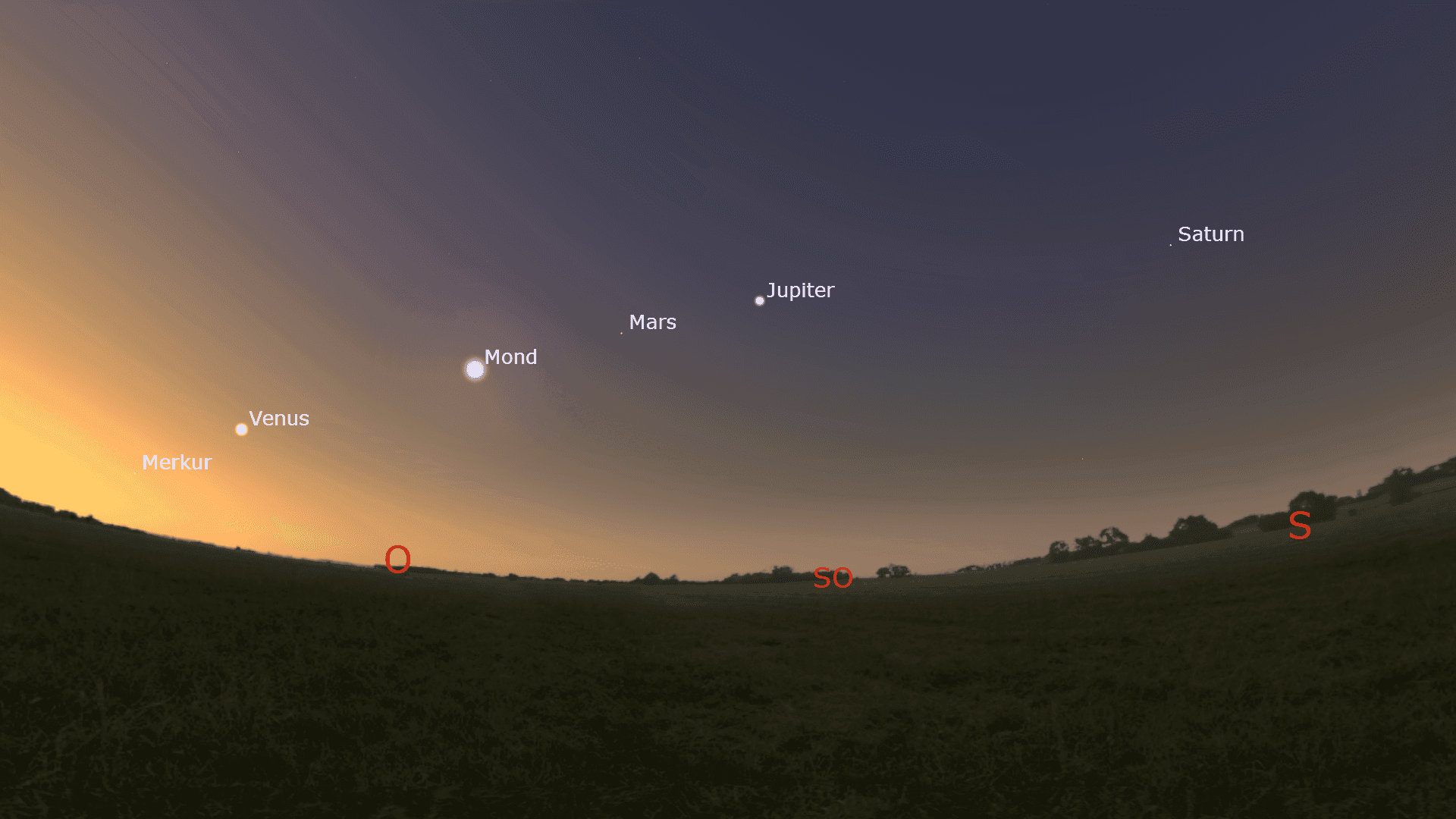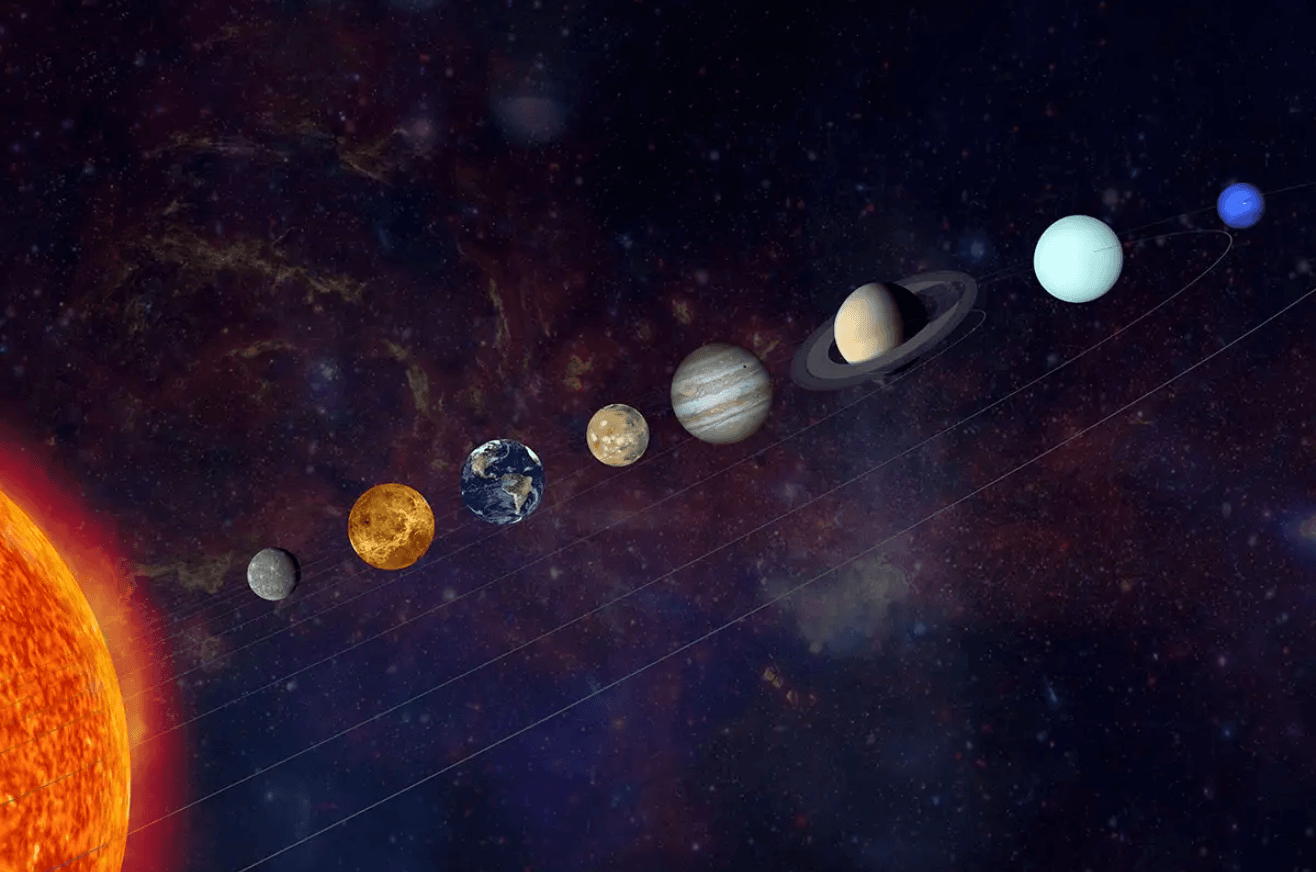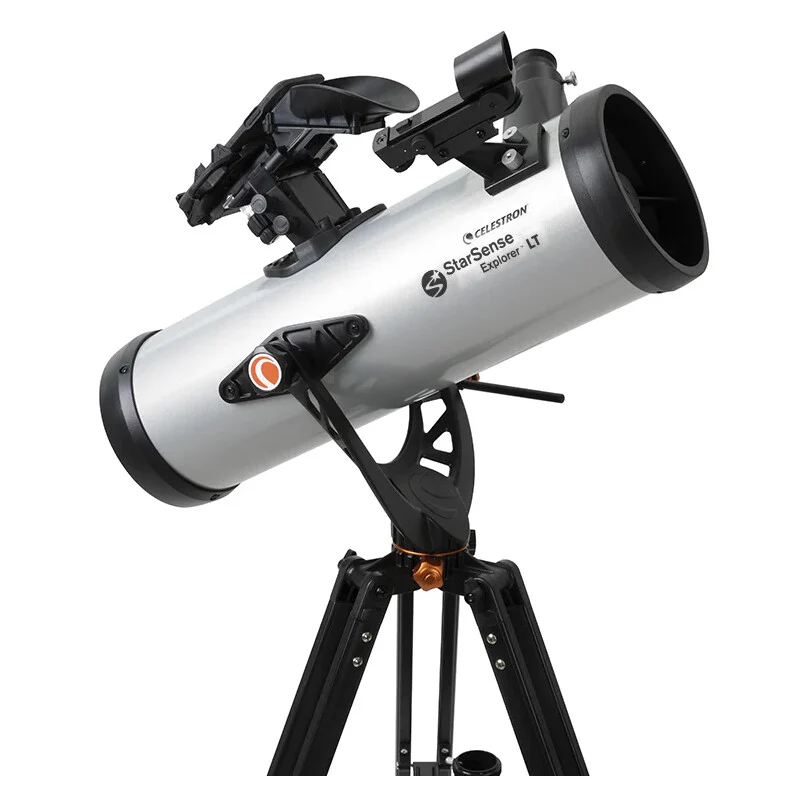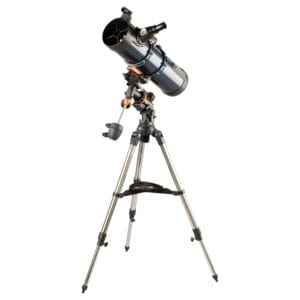The night sky in January 2025 offers an impressive astronomical phenomenon: a special planetary alignment. This spectacular display, where six planets are visible in an almost perfect line, is an opportunity not to be missed. Later in February, Mercury joins this celestial parade, bringing the total to seven visible planets. This phenomenon promises to be a unique experience for both beginner and experienced stargazers. Discover how to best experience this special event, with or without a telescope.

What is a Planetary Alignment?
A planetary alignment, also known as a “planetary parade”, occurs when multiple planets are visible in the same region of the sky from Earth’s perspective. Although the planets aren’t exactly in a straight line in reality, they appear to be when viewed from Earth. This happens because the planets in our solar system orbit the sun roughly in the same plane, known as the ecliptic plane. When their positions along this plane coincide, we call it a planetary alignment. It’s important to note that such alignments are visual phenomena and that the planets in space remain at enormous distances from each other.
Did you know that Uranus and Neptune are only visible with a telescope? At telescoop.nl you’ll find everything you need to discover these mysterious planets yourself.
Which Planets are Visible?
During the alignment in January 2025, the following six planets will be visible:
- Venus: Known as the “Evening Star”, Venus is the brightest planet in the sky and easily visible to the naked eye.
- Mars: The characteristic reddish glow of Mars makes this planet easy to recognize without aids.
- Jupiter: As one of the largest planets in our solar system, Jupiter shines brightly and is also visible to the naked eye.
- Saturn: Although slightly less bright than Venus and Jupiter, Saturn can be seen without a telescope in good conditions.
- Uranus: This planet is at the limit of naked-eye visibility and requires no telescope under ideal dark conditions, but with the Celestron it does.
- Neptune: Due to its distance and faint brightness, Neptune is only visible with a telescope like the StarSense.
Later, towards the end of February 2025, Mercury will also join this alignment, making seven planets simultaneously visible in the sky.
Where and when Can You See the Planetary Alignment?
The best period to observe this planetary alignment is from January 21, 2025, just after sunset. During this evening, the planets will stretch across the sky from the western to the eastern horizon. Venus and Saturn will be low on the western horizon, while Mars will be visible in the east. Jupiter will be high in the sky, and Uranus and Neptune will be positioned between these locations. It’s recommended to choose a location with an unobstructed view of the horizon and minimal light pollution for optimal observation. Using astronomical apps like www.theskylive.com/planetarium can help identify the exact positions of the planets. The convenient thing is that you don’t need any app, The SkyLive uses your location and makes it very easy to identify all planets!
Planetary Alignment February
In February 2025, the celestial show becomes even more spectacular when Mercury joins the existing six planets. This brings the total to seven visible planets in the night sky. Mercury is one of the most challenging planets to spot due to its proximity to the sun, but during this period, it’s relatively easy to observe shortly after sunset.
When is Mercury Visible?
- Early February: Mercury appears low on the western horizon immediately after sunset.
- Mid-February: Mercury reaches its greatest eastern elongation, meaning it appears furthest from the sun and is most visible.
- Late February: Although Mercury slowly moves closer to the sun again, it remains visible until about 7:00 PM in clear weather.
Tips for Observing Mercury
- Use binoculars or StellarVision telescope: This makes it easier to distinguish Mercury from the sun’s glow.
- Choose a low horizon: Find a location with an unobstructed view of the western horizon without obstacles like trees or buildings.
- Plan your observation: Use a browser app like The SkyLive, as mentioned above, to determine Mercury’s exact location and timing.
With the addition of Mercury, February becomes one of the most memorable months of 2025 for astronomers and night sky enthusiasts. Don’t miss this unique opportunity!
Are the Planets Really in a Line?

Although from our perspective it appears that the planets are in a line, this isn’t actually the case. The planets’ orbits lie in different planes and at different distances from the sun, making a perfect alignment in three dimensions extremely rare. In fact, it only occurs once every 396 million years. Moreover, the planets move at different speeds and orbits, meaning they rarely line up, even from the sun’s perspective. The phenomenon we observe is the result of planetary orbits appearing to coincide along the same line in the sky from our perspective on Earth.
How Can You Observe the Planets?
- With the naked eye: Venus, Mars, Jupiter, and Saturn are bright enough to see without aids. However, it’s important to choose a dark location, away from city lights, to clearly distinguish the planets.
- With binoculars: A good pair of binoculars can help spot Uranus and see more details of the other planets. Ensure a stable surface or use a tripod for a steady image.
- With a telescope: A telescope is necessary for observing Neptune. Additionally, a telescope offers the possibility to see details like Saturn’s rings or Jupiter’s moons. At telescoop.nl you’ll find a wide range of telescopes suitable for both beginners and advanced users.
Tips for an Optimal Stargazing Experience
- Choose a dark location: Avoid areas with high light pollution for the best visibility.
- Be on time: Start your observation just after sunset to see all planets before they disappear below the horizon.
- Use technology: Apps like Sky Tonight can help you identify planets and other celestial bodies.
- Dress warmly: January and February evenings can be cold; ensure you have sufficient warm clothing.
Which Telescope Do We Recommend?
Our recommendation of the month for planet enthusiasts is the Starsense Explorer from Celestron. With the handy app and included eyepieces, you can quickly admire the planets in detail. Discover more….

Conclusion
The planetary alignment in January and February 2025 is an exceptional event that offers a beautiful view of our solar system. Whether you’re a seasoned astronomer or just interested in the night sky, you shouldn’t miss this unique chance to see seven planets. Plan your observation, prepare yourself, and enjoy the magic of the universe.







